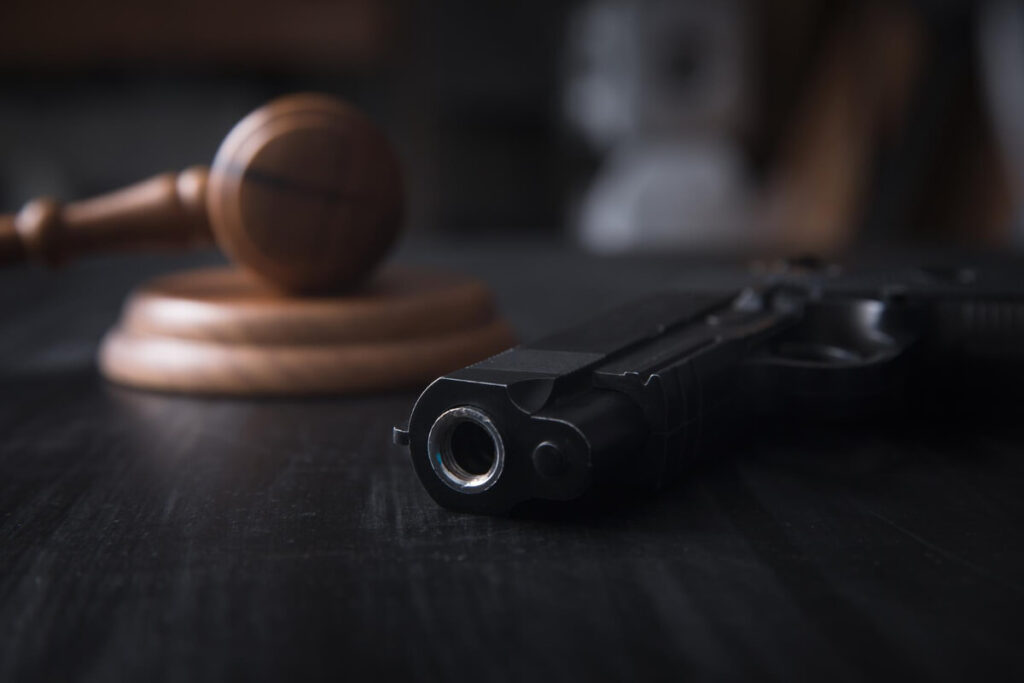July 2, 2022
Good morning. Every Saturday, we write about one specific right that you possess as a citizen in our country. In today’s edition of “Know Your Rights”, we look at the right to bear arms in India.
KNOW YOUR RIGHTS – EDITION 46
Right to Bear Arms in India

In light of the uproar in the United States of America (USA) regarding gun laws, we thought it was a good time to understand our rights to bear arms in the country. In a literal sense, the right to bear arms refers to people’s right to self-defence.
The right to bear arms has constitutional recognition in the USA under the Second Amendment of the Constitution. This amendment empowers citizens to retaliate against any tyrannical threat thereby employing self-defence as a primary justification for gun rights. However, this law is not absolute in the United States. It is subject to scrutiny and ‘reasonable restrictions’ by the State.
The right to bear arms is completely different in India when compared to the USA. It has not been given constitutional recognition and is solely regulated by the Arms Act of 1959. This act primarily consolidates, regulates and amends Indian laws relating to ammunition and arms, attempting to curb the circulation of illegal weapons and crimes caused by the same. No Indian citizen is allowed to have possession of firearms without a license issued in accordance with this Act.
Let’s take a quick look at the history of gun control in India. After the first war of independence in 1857, the British imposed the Indian Arms Act of 1878 in an attempt to prevent uprisings in the future. This Act implemented the system of licensing of arms, stating that only those Indians who received prior authorization or a legitimate license were allowed to possess arms. After Independence, the Arms Act of 1959 was passed by the Indian government which recognized that specific citizens require firearms for various reasons including protection.
Although gun control is primarily driven by this legislation, Article 21 of the Indian Constitution poses as an exception in the cases of self-defence. The case of Ganesh Chandra Bhatt, judged by Justice Katju (Ganesh Chandra Bhatt vs District Magistrate, Almora And ORS) adopts the same view.
Justice Katju ruled that if an applicant for a weapon does not receive a response within three months from the government, it should be deemed that the license has been granted. He said that since the right to self-defence is a natural right, it should be included within the boundaries of Article 21 which enumerates the right to life. Additionally, he stated that the worshipping of firearms during Diwali and Dusshera alludes to the dignity and self-respect of an Indian citizen which is also guaranteed by Article 21.
This ruling, however, was overturned after the bomb blasts in Mumbai in 1993. After being over-ruled by multiple subsequent judgements, currently, only the Arms Act can govern the right to bear arms. This Act dictates that possession of firearms is a privilege and not a constitutional right (as it is in the USA). The process of obtaining a license to bear arms is far from feasible.
After receiving an application, the licensing authority requires the officer in charge at the nearest police station to submit a report within the stipulated time. Once it has been submitted, the licensing authority may conduct an inquiry and consider the report subject to provisions laid down by the Act. The decision of approval or refusal is provided in writing to the applicant.
Once granted, the license is valid for three years from the date unless the licensing authority deems that a shorter period of time should be allotted to the applicant. Gun licenses are to be renewed for the same time period as was originally granted. The license can be revoked at any point in time if the licensing authority sees it fit.
Evidently, obtaining a firearms license in India is a tedious process under the Arms Act. But has gun violence in India been curbed successfully by this legislation?
- As of 2019, India ranked fifth in the countries with the highest total gun deaths.
- Despite the strict gun laws, 90% of deaths by firearms in India are caused by using an illegally held weapon.
- It has been established that states with higher gun ownership are more likely to experience higher gun fatalities as is the case in Uttar Pradesh where 2,155 deaths were caused by firearms; with 12,77,914 active licenses in the state.
When compared to developed countries such as the USA and Finland, India has the lowest number of civilian firearms due to the tight laws in place. One of the side-effects of this, however, is the problem of accessing firearms through unlawful means.
As Dr B R Ambedkar put it, “I personally myself cannot conceive how it would be possible for the State to carry on its administration if every individual had the right to go into the market and purchase all sorts of instruments of attack without any let or hindrance from the State.”

